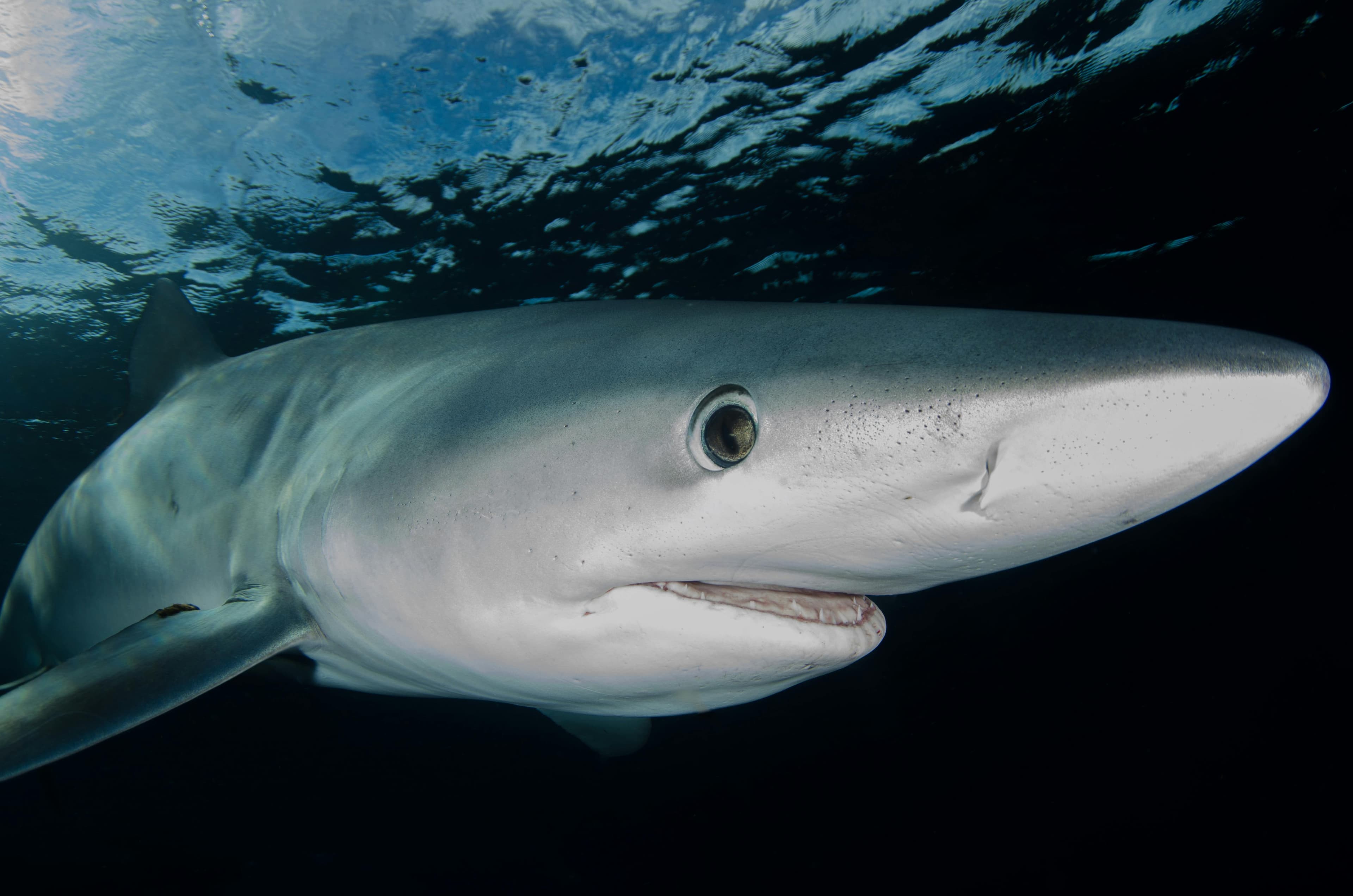
Atlantic Sharpnose
Rhizoprionodon terraenovae
Status: Least Concern
The Atlantic Sharpnose Shark is one of the most abundant off the coast of North Carolina and is both commercially and recreationally harvested. The region also serves as an important nursery for this species.
Read more on IUCN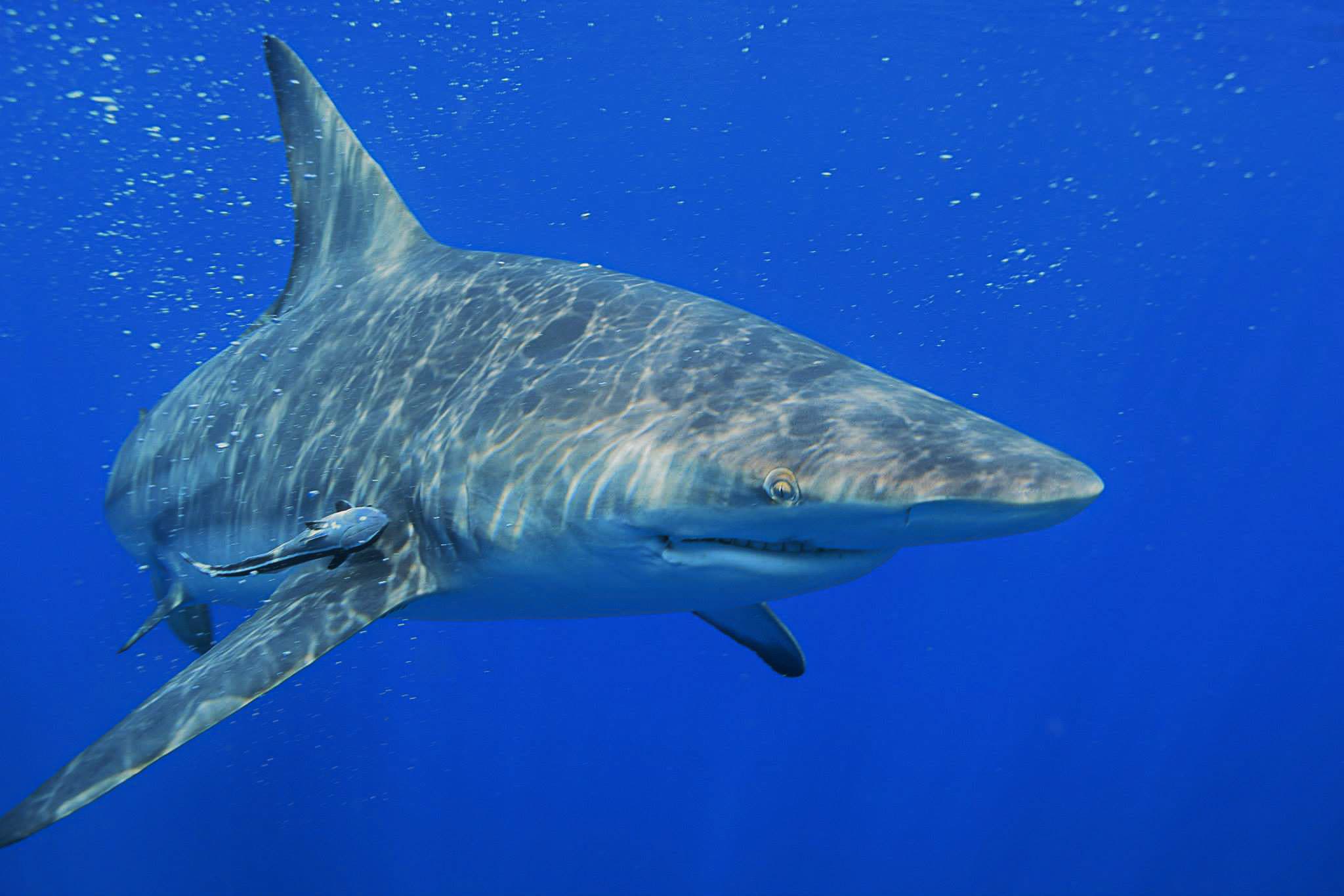
Photograph courtesy of Lisa Litwak
Blacktip Shark
Carcharhinus limbatus
Status: Vulnerable
The Blacktip Shark is another abundant species off the coast of North Carolina and is harvested both commercially and recreationally. Highly mobile, these sharks migrate thousands of miles, often in large groups and are known to travel into estuaries.
Read more on IUCN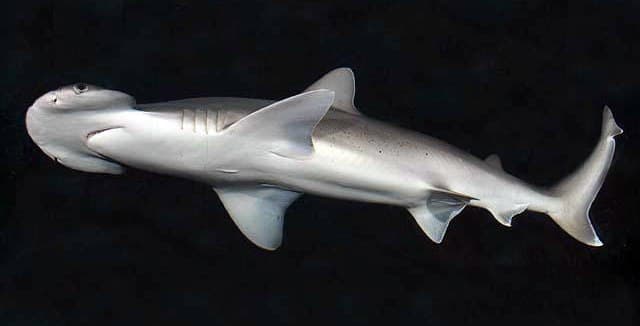
Bonnethead
Sphyrna tiburo
Status: Largely Depleted
By feeding on species such as cownose rays, bonnethead sharks help control ray populations, which in turn reduces pressure on other commercially important species. For instance, excessive predation by rays on scallops has been associated with the decline of the scallop fishery in North Carolina.
Read more on IUCN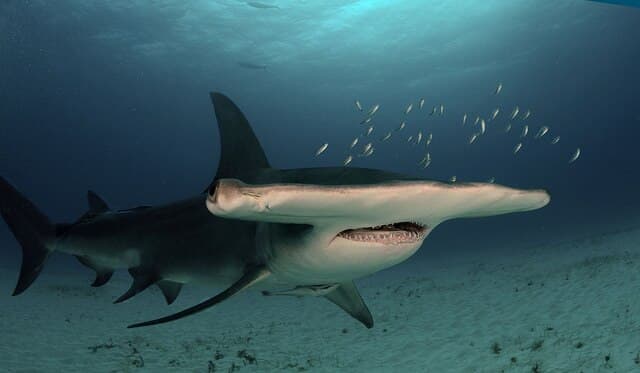
Great Hammerhead
Sphyrna mokarran
Status: Critically Endangered
Great Hammerheads are known to use the southeastern Outer Banks of North Carolina as an overwintering area, highlighting the importance of protecting this species and its habitat.
Read more on IUCN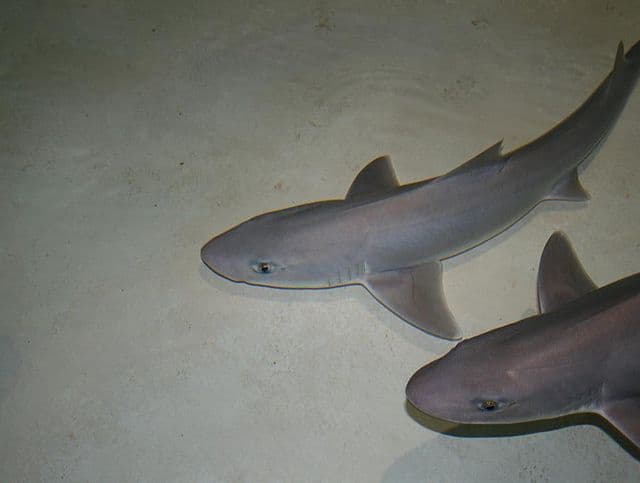
Dusky Smoothound
Mustelus canis
Status: Near Threatened
The Smoothhound Shark (aka Smooth Dogfish) is abundant off the coast of North Carolina and is harvested both commercially and recreationally. As a primary predator of crustaceans like shrimp and crabs, it plays an important role in the state's marine ecosystem, illustrating the complex interactions between predators and prey.
Read more on IUCN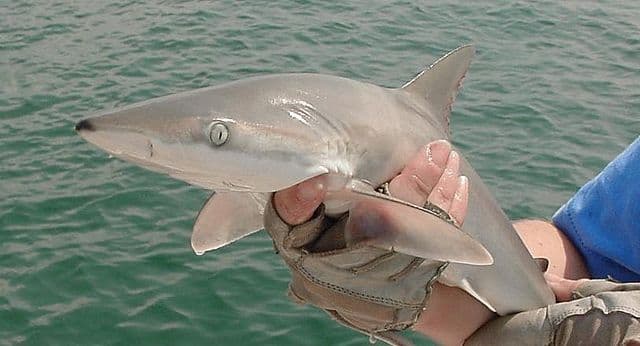
Blacknose Shark
Carcharhinus acronotus
Status: Endangered
Once a key part of North Carolina’s commercial fisheries and valued by recreational anglers for its fight on light tackle, the Blacknose Shark is now strictly regulated by both federal and state governments due to overfishing.
Read more on IUCN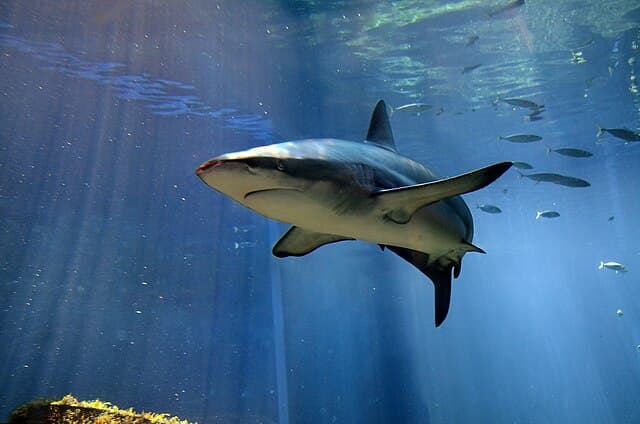
Dusky Shark
Carcharhinus obscurus
Status: Endangered
North Carolina's coast serves as a vital aggregation and nursery area for juvenile dusky sharks. Given their vulnerability, identifying key habitats is crucial for developing effective conservation and management strategies.
Read more on IUCN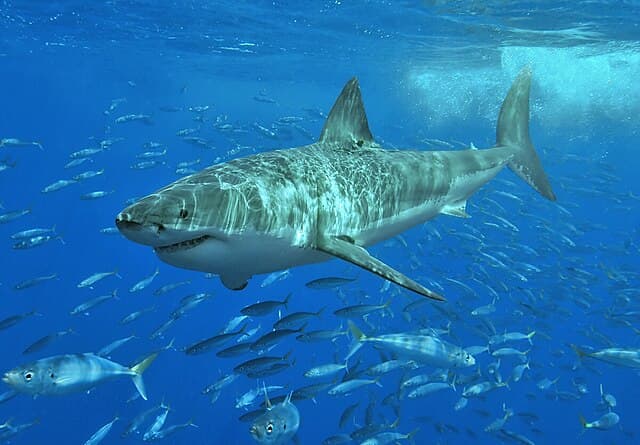
White Shark
Carcharhinus carcharias
Status: Moderately Depleted
The waters near North Carolina, particularly around the Outer Banks, are important gathering sites for great white sharks during their spring and fall migrations along the East Coast. The area is also believed to serve as a winter nursery for pups. These seasonal aggregations highlight the need for continued research and conservation efforts to protect the species.
Read more on IUCN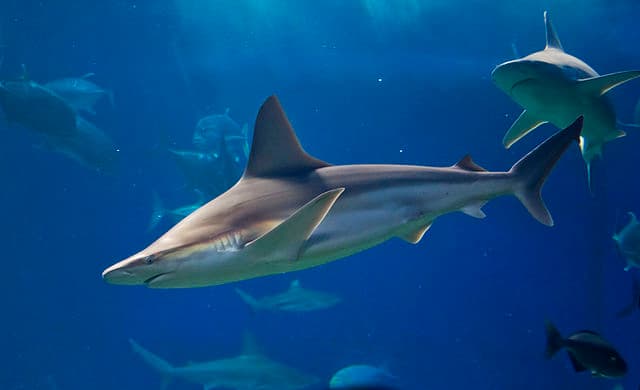
Sandbar Shark
Carcharhinus plumbeus
Status: Endangered
Juvenile sandbar sharks spend the winter months in North Carolina’s inshore and nearshore waters, including areas like Pamlico Sound. This habitat supports the species’ distribution and plays a key role in maintaining the coastal food web. NOAA has since designated the sandbar shark as a protected and prohibited species.
Read more on IUCN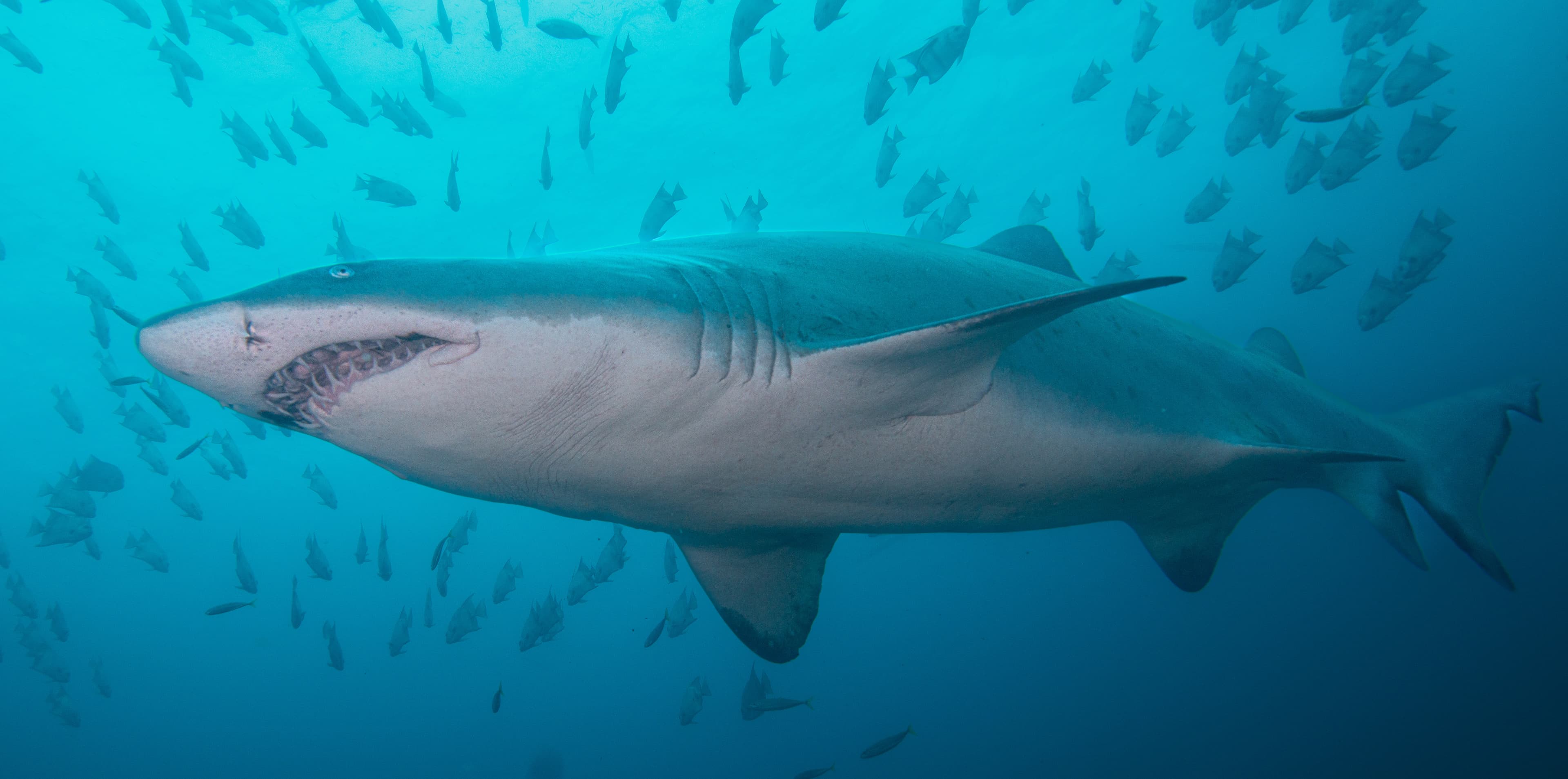
Photograph courtesy of Lisa Litwak
Sand Tiger Shark
Carcharhinus taurus
Status: Critically Endangered
The coast of North Carolina, especially around the shipwrecks known as the "Graveyard of the Atlantic" provides crucial seasonal habitat for sand tiger sharks. Pregnant females are commonly seen off the coast during summer, fall, and winter, highlighting the significance of these waters for gestation and pupping. Research indicates that female sand tiger sharks exhibit strong site fidelity, repeatedly returning to the same shipwrecks each year.
Read more on IUCN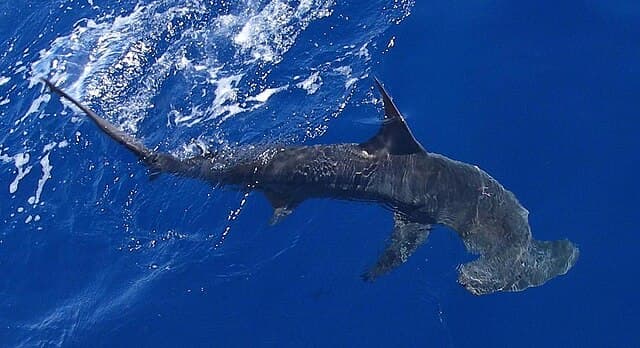
Scalloped Hammerhead
Sphyrna lewini
Status: Critically Endangered
Scalloped hammerheads commonly overwinter in North Carolina’s coastal waters and rely on inshore areas as nurseries. They are the most frequently encountered large hammerhead species in the region, though their critically endangered status raises conservation concerns. This species is often mistaken for the recently identified Carolina hammerhead due to their similar appearance.
Read more on IUCN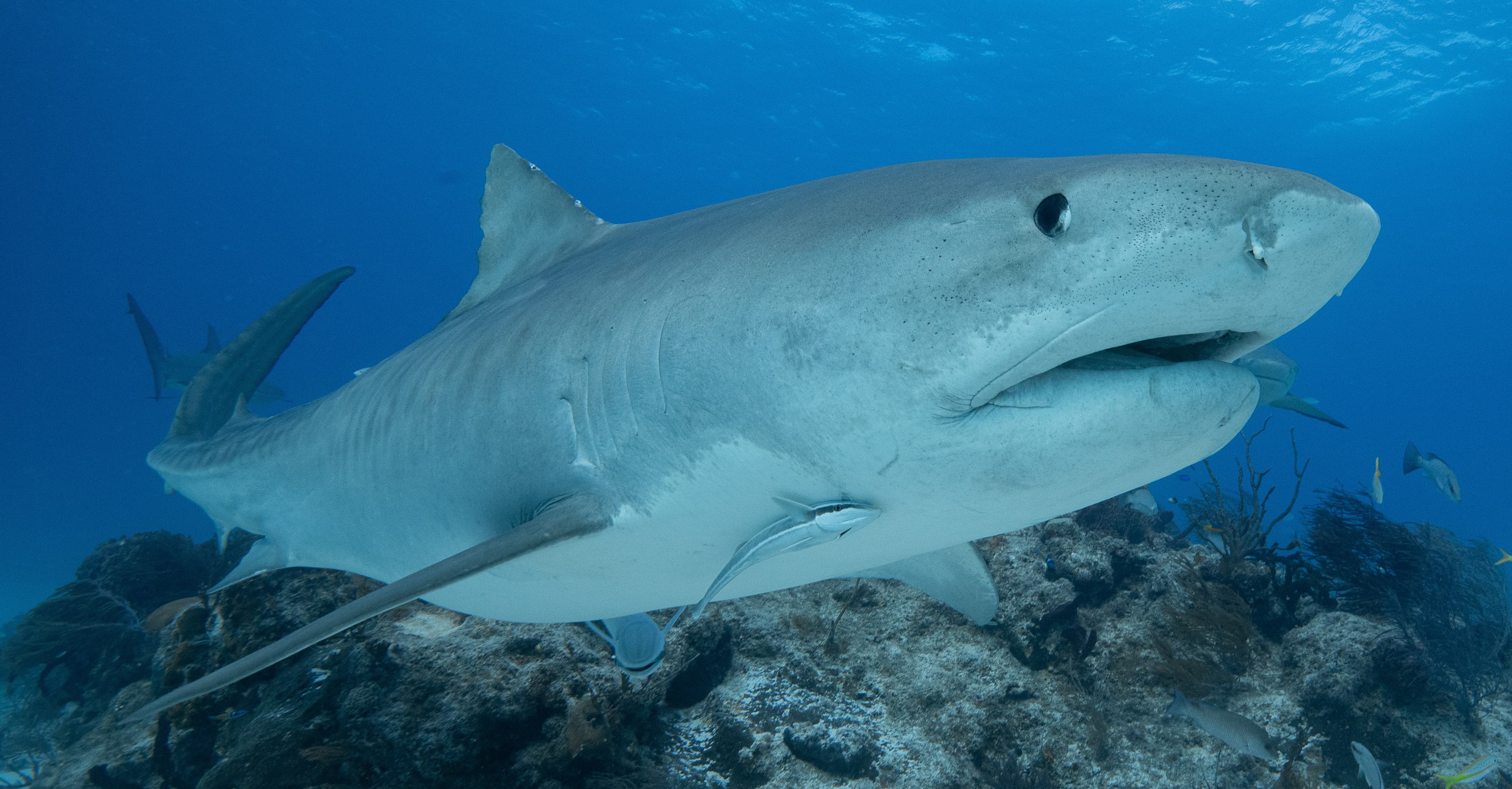
Photograph courtesy of Lisa Litwak
Tiger Shark
Galeocerdo cuvier
Status: Near Threatened
As an apex predator, Tiger sharks help regulate marine populations and prevent any one species from overwhelming the food web. Despite their reputation, the presence of large sharks like tiger sharks is now recognized as an indicator of a healthy and recovering ecosystem along the North Carolina coast.
Read more on IUCN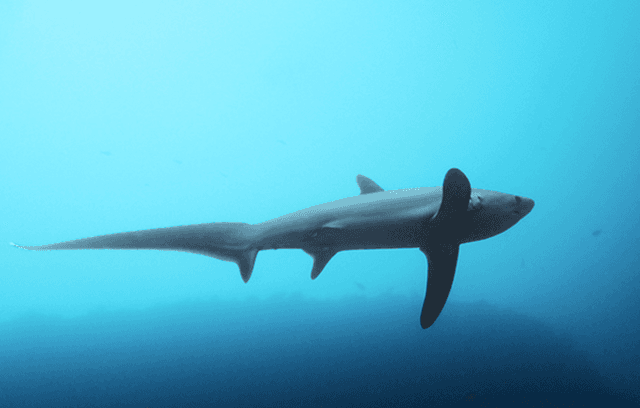
Common Thresher Shark
Alopias vulpinus
Status: Vulnerable
Although typically found in open ocean waters, common thresher sharks occasionally move into North Carolina’s coastal areas, especially during the summer months.Thresher sharks are vulnerable to overfishing and long-term population decline due to their slow reproductive rates.
Read more on IUCN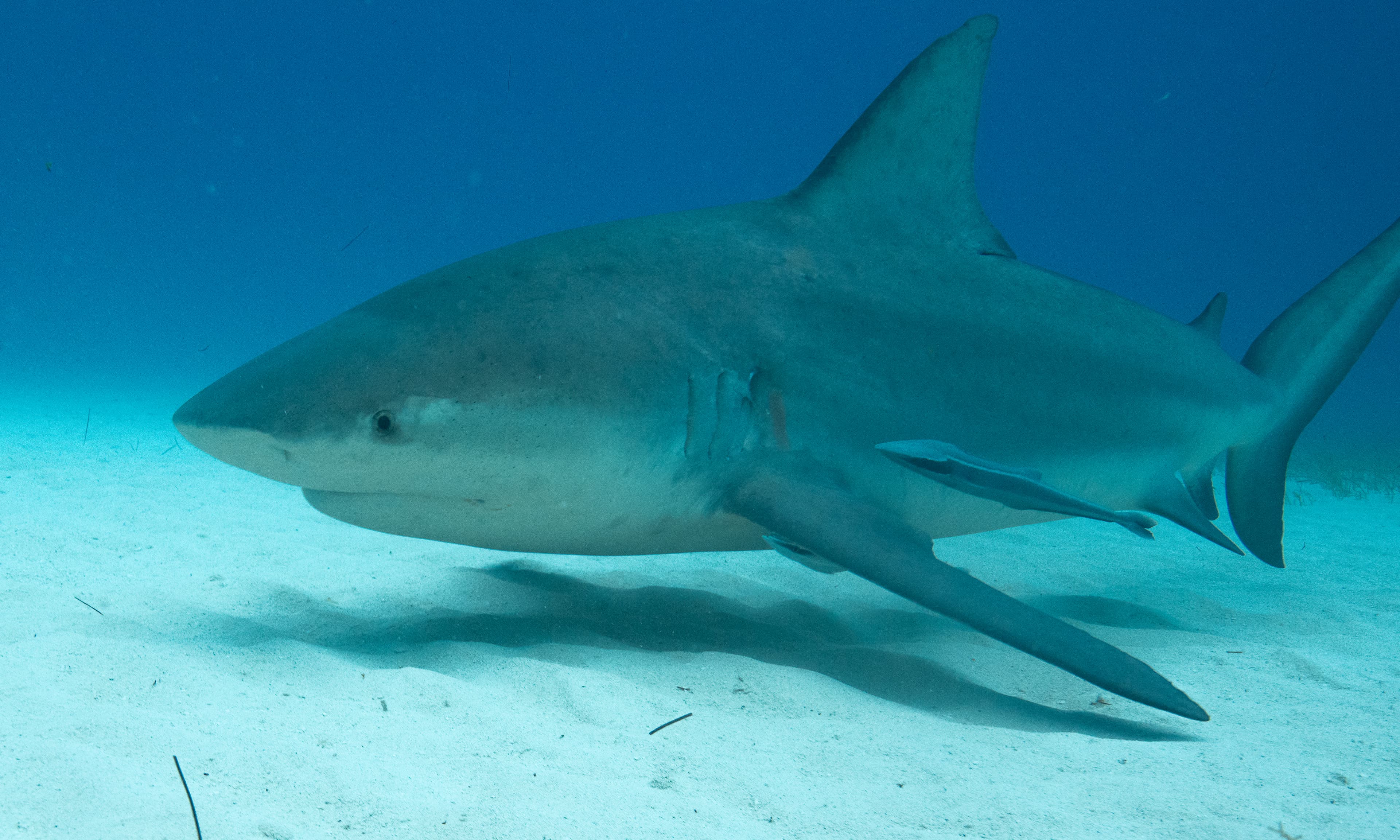
Photograph courtesy of Lisa Litwak
Bull Shark
Carcharhinus leucas
Status: Vulnerable
Bull sharks are uniquely adapted to tolerate a wide range of salinities, from saltwater to fresh water, allowing them to venture far into estuaries and rivers like the Pamlico and Neuse.
Read more on IUCN